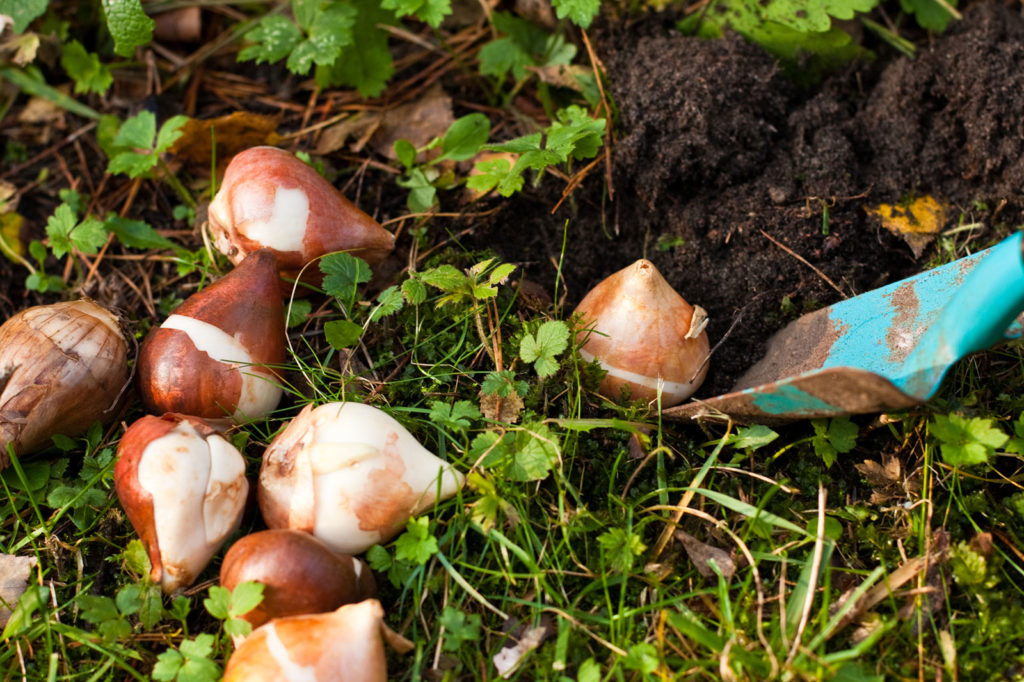As the weather starts to turn colder, and the nights grow longer, you might think your work in the garden is over for the season. Not so! It’s the perfect time to plant bulbs. Fall planted bulbs yield springtime color. Ready to get started? Grab your Wellies and your rain coat, and let’s go!
Daffodils, crocus, grape hyacinths, and tulips are all great choices for the Pacific Northwest climate. You also might want to add snowdrops, crocus and scilla, for variety. Or, if you’re feeling adventurous, add some Windflower (Anemone), Dog-Tooth Violet (Erythronium), Wake Robin (Trillium) and Checkered Lily or Crown Imperial (Fritallaria). Those delicate woodland plants look great when planted among deciduous trees.
When purchasing bulbs, choose the largest, firmest bulbs possible. Avoid mushy, soft, or misshapen bulbs. Once you’ve brought them home, plant them as soon as possible. Bulbs prefer fertile, well-drained soil. Add compost and organic matter to your selected area. Additional bone meal or bulb fertilizer sprinkled into the bottom of your planting hole, covered with a small amount of soil before placing the bulb, will contribute to the health and longevity of your plants.
Gardeners sometimes make the mistake of planting bulbs sparsely in long rows. A more pleasing, natural-looking design consists of planting 5-10 bulbs in groups throughout your garden.
Plant the bulbs 2” – 3” deep, with the pointed tips up. If in doubt, place them on their sides. A 2” layer of mulch over the top will help your bulbs retain moisture and keep the soil slightly warmed for longer. This will help the roots get a good start.
Plant them in an area that gets at least 6 hours of sun each day. If you prefer, you can plant certain bulbs under deciduous trees in your yard—the bulbs should get enough sun through the branches of the “not-yet-leafed” tree.
Your fall planted bulbs will produce oodles of vibrant color once spring rolls around. After that, maintenance is easy. Simply allow the leaves and stems to wither away before discarding of them. Snip the dead foliage off with your pruning shears so as not to disturb the blub. Bulbs get much of their energy for the next bloom from the spent foliage.
Planting bulbs is an easy and inexpensive way to brighten your yard. You’ll enjoy the fruits of your labor for many years to come.
